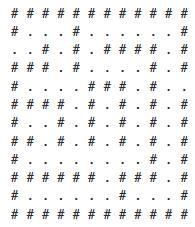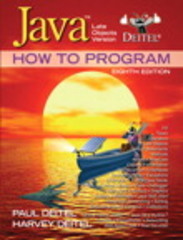The grid of #s and dots (.) in Fig. 18.23 is a two-dimensional array representation of a
Question:
The grid of #s and dots (.) in Fig. 18.23 is a two-dimensional array representation of a maze. The #s represent the walls of the maze, and the dots represent locations in the possible paths through the maze. A move can be made only to a location in the array that contains a dot.
Fig. 18.23

Write a recursive method (mazeTraversal) to walk through mazes like the one in Fig. 18.23. The method should receive as arguments a 12-by-12 character array representing the maze and the current location in the maze (the first time this method is called, the current location should be the entry point of the maze). As mazeTraversal attempts to locate the exit, it should place the character x in each square in the path. There’s a simple algorithm for walking through a maze that guarantees finding the exit (assuming there’s an exit). If there’s no exit, you’ll arrive at the starting location again. The algorithm is as follows: From the current location in the maze, try to move one space in any of the possible directions (down, right, up or left). If it’s possible to move in at least one direction, call mazeTraversal recursively, passing the new spot on the maze as the current spot.
If it’s not possible to go in any direction, “back up” to a previous location in the maze and try a new direction for that location (this is an example of recursive backtracking). Program the method to display the maze after each move so the user can watch as the maze is solved. The final output of the maze should display only the path needed to solve the maze—if going in a particular direction results in a dead end, the x’s going in that direction should not be displayed.
Step by Step Answer:

Java How To Program Late Objects Version
ISBN: 9780136123712
8th Edition
Authors: Paul Deitel, Deitel & Associates





